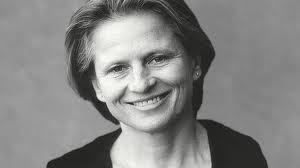A Nov. 12, 2014 announcement from the principal accrediting agency for health care organizations could significantly impact access to integrative pain care throughout the United States.
The agency is the Joint Commission. The revised accreditation standard will apply to all the institutions under the agency's guidance and review: hospitals, ambulatory care facilities, home health and senior homes.
The focus of the change is great news for integrative health and medicine. The Joint Commission significantly elevated the potential value of "non-pharmacologic" approaches. Among those options directly called out are, in the terms used by the Joint Commission, acupuncture therapy, massage therapy, chiropractic therapy, osteopathic manipulative treatment, physical therapy, and relaxation therapy.
The Joint Commission did not act in a vacuum. The action was prompted by an April 2013 request for review of the pain management standard by a team led by acupuncturis Arya Nielsen, Ph.D., Ac from the Department of Integrative Medicine at Mount Sinai Beth Israel. The team subsequently provided consultation and support for the Joint Commission's investigation.
The full story of the collaboration speaks to the power of two impassioned individuals backed by their health care organization plus the well-utilized muscle of the growing Consortium of Academic Health Centers for Integrative Medicine.
The effort began with a recollection of Nielsen. She recalled reading nearly 15 years earlier in the Integrator for the Business of Alternative Medicine that the Joint Commission had vaguely referenced non-pharmacological approaches in a 2000 pain standard. The intervening period had been robust for acupuncture research. Wasn't it time, Nielsen reasoned, for taking another look?
Nielsen is director of the Acupuncture Fellowship for Inpatient Care at Mount Sinai Beth Israel Hospital. She took a comprehensive literature review she'd presented at a hospital grand rounds to Ben Kilgler, M.D., MPH, vice chair of the hospital's Department of Integrative Medicine. Kligler happened also at that time to be the chair of the above-mentioned Consortium.
Two excellent suggestions emerged. First, why not open the query to the Joint Commission to a range of non-pharmacologic approaches rather than just acupuncture? The interval since the 2000 standard almost precisely coincided with the era of research funding by the NIH National Center for Complementary and Alternative Medicine following its creation in 1998. Studies funded by this agency alone vastly expanded the science on multiple non-drug approaches.
Nielsen and Marsha J. Handel, MLS, the department's informatics lead, submitted a literature review of acupuncture therapy for pain. A subsequent review was submitted for massage therapy with assistance of researcher-massage therapist Janet Kahn, Ph.D., LMT from the University of Vermont College of Medicine. The Nielsen-Handel team also submitted a review of studies of relaxation therapy.
Second, why not ask those members of the consortium of medical schools with integrative programs who wished to do so to co-sign a request that the Joint Commission revise the standard. This could add a measure of gravitas. Twenty chose to do so. They spoke to the significant opioid abuse problem in the United States and the typical lack of treatment options given patients despite the mounting research supporting integrative therapies and practitioners in pain treatment.
The door opened at the Joint Commission. Nielsen subsequently served on a January 2014 stakeholder panel of pain medicine specialists throughout the US that was tasked to help the Joint Commission revise the standard.
The beauty in the language of the revised standard is the side-by-side placement of "non-pharmacologic" and "pharmacologic" approaches. In fact, the non-pharma options are listed first. While this order was likely for alphabetical reasons, it follows a proper therapeutic order in which less-invasive approaches are considered first.
Accreditation insiders will note that the revised pain standard does not have the full police force the Joint Commission can put behind an action. Hospitals and clinics will not be "scored" on their compliance. Thus the move is seen more as a carrot that empowers integrative interests rather than a stick to force integrative pain treatment among the reluctant.
Notably however, in their statement on the revision, the Joint Commission specifically asked that "when considering the use of medications to treat pain, organizations should consider both the benefits to the patient, as well as the risks of dependency, addiction, and abuse of opioids." The admonition helps tee up exploration of other options.
Gratitude in this time of giving thanks. Credit the Joint Commission for its responsiveness. Credit Nielsen for seeing the opportunity and doing the major work, with Handel, to create the case as the core Mount Sinai Beth Israel team. Credit Kilgler and the Consortium of Academic Health Centers for speaking up for the need for change.
The new standards will bring patient care a step closer to a "Never Only Opioids" era, blogged about here on HuffPost, that can help us undo the present harm to human beings, families and communities from unnecessary use, and overuse, of prescription pain-killers.
